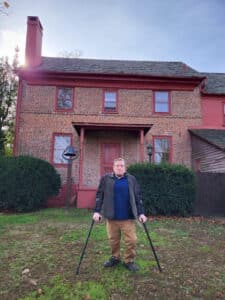By Cyndi Steiner, Executive Director, NJ Bike & Walk Coalition
On July 23, 2015, the Monmouth County Freeholders will vote on a resolution to share the construction cost of complete streets features on county roads, reversing their April 23, 2015 decision that passed 100% of this cost on to the towns.
The new resolution, proposed by Freeholder Thomas Arnone, calls for a 50% cost sharing under a shared services agreement between the county and each municipality that chooses to implement bike lanes and other complete streets infrastructure on county roads leading into and through their towns.
The resolution expresses the county’s desire to “support its municipalities in their bicycle planning and implementation efforts.” It then goes on to require each municipality that wishes to add bike lanes to their portion of county roads to develop a bike master plan. With 53 municipalities in the county, the potential exists for a substantial number of townships to create bike master plans in order to receive funding for bike lanes. Having a county encourage the development of bike planning at the township level is an excellent precedent for other counties, as bike master plans are often a heavy lift for townships to pass.
The proposed resolution then goes on to state that there is a need to “establish a uniform policy regarding the design and installation of bicycle facilities on Municipal, County and State roads…” It supports this in its “Revised Monmouth Bicycle Facility Policy and Guidelines” by requiring adherence to NJDOT’s latest “Bikeways Planning and Design Guidelines”, the latest version of AASHTO guidelines, and the latest MUTCD. All of this in the case where a “preferred bicycle facility” of a shared-use path separated from the road by a minimum distance of 5 feet cannot be accommodated. This is music to our ears. Firstly, getting consistency across townships in New Jersey is almost always a struggle, as home rule often trumps any attempts for efficiency, consistency and connectivity. Secondly, the latest AASHTO guidelines are more advanced than what NJDOT is currently using, and should provide incentive to NJDOT to adopt them. Finally, any county that recognizes the safety value of separated shared-use paths is forward-thinking in its bike planning, at least for New Jersey.
Continuing on, the resolution provides for lane widths that meet or exceed AASHTO requirements for the design speed and traffic volume of the road. Rumson Road will get 11 foot wide lanes, which in and of themselves will help to reduce vehicle speed and increase safety for bike riders. Rumson Road has a posted 40 mph speed limit, and our experience pedaling along that road left us wondering if anyone actually knew the speed limit.
The Monmouth Bicycle Facility guidelines require each municipality to create and approve road designs following the guidelines described above, including cross-acceptance by adjoining towns, and then the county engineer will approve them. The county has done its homework: this approach ensures that neither the county nor the municipality will be liable for any incidents as long as the guidelines are followed. Furthermore, cross-acceptance has the potential to encourage neighboring communities to adopt their own bike plan and add bike lanes, domino fashion, across the county. What community wants to be the reason the bike lane ends?
The approved plans may then be included by the county in a “Capital Improvement Project” along the county road as long as the road segment is “of a sufficient length or connects to existing bicycle facilities;” in other words, when the county repaves a road, it may follow the approved designs. The county then may fund 50% of the construction cost. With a complete streets policy in place, the county will have little reason not to follow the designs. These rules encourage municipalities to add bike lanes to long sections of roadway and also to encourage their neighbor to add them if they want to receive the 50% cost share. All of this supports connectivity and encourages the development of a bike lane network that allows riders to get from point A to point B.
Not stated in the resolution is the county administration of the bidding process and management of all construction contracts, further leveraging county resources above the 50% cost sharing.
By creating an approach where the municipality and the county have joint responsibility for road design and infrastructure, both local control of the project and consistency are ensured. The towns can design what works best for them; county involvement will provide consistency from town to town in standards, guidelines, design, materials, signage, and overall implementation. In short, when someone rides a bike from Red Bank to Fair Haven, for example, the bike lanes will look similar to them.
With a base of 53 municipalities, Monmouth County has its hands full in implementing complete streets. This approach recognizes the need for the county to evolve its landmark complete streets policy in a manageable way, such that knowledge and experience can be gained related to capital and maintenance costs, timelines, and best practices, eventually leading to a county budget that can accommodate the complete streets build out throughout all Monmouth County communities. This proposed approach puts the county far down the road to that day. It also will put bike lanes on Rumson Road by Labor Day, if the resolution passes.
Edited on 7/22/15 at 12:05 pm.














































































